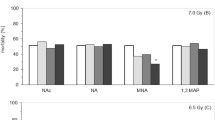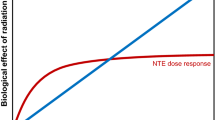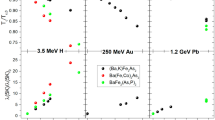Abstract
ONE of the theories proposed for explaining the protective role of certain substances on animals submitted to a lethal dose of ionizing radiation involves the capture of free radicals by the protective compound (scavenger action). As a consequence of this process the compound is chemically modified in the biological structures where it happens to be, which then survive the irradiation. If such a theory is correct a certain degree of correlation would be expected between the protecting activity of a substance and its lability towards radiation, unless a catalytic mechanism is involved.
This is a preview of subscription content, access via your institution
Access options
Subscribe to this journal
Receive 51 print issues and online access
$199.00 per year
only $3.90 per issue
Buy this article
- Purchase on SpringerLink
- Instant access to full article PDF
Prices may be subject to local taxes which are calculated during checkout
Similar content being viewed by others
References
Bacq, Z. M., and Alexander, P., “Principes de Radiobiologie” (Masson, Paris, 1955).
Shapiro, B., and Eldjarn, L., Rad. Res., 3, 255 (1953).
Cavallini, D., Mondovi, B., Giovannella, B., and De Marco, C., Nature, 184, 61 (1959).
Cavallini, D., De Marco, C., and Mondovi, B., Bull. Soc. Chim. Biol., 40, 1711 (1958).
Cohen, J. A., Vos, O., and van Bekkum, D. W., “Advances in Radiobiology”, edit. by Hevesy, G. de, Forssberg, A., and Abbatt, J. D., 134 (Oliver and Boyd, Edinburgh, 1957).
Author information
Authors and Affiliations
Rights and permissions
About this article
Cite this article
CAVALLINI, D., TENTORI, L. Inability of Thiotaurine to protect Mice against Ionizing Radiation. Nature 186, 254 (1960). https://doi.org/10.1038/186254a0
Issue date:
DOI: https://doi.org/10.1038/186254a0



